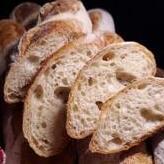-
Welcome to the eG Forums, a service of the eGullet Society for Culinary Arts & Letters. The Society is a 501(c)3 not-for-profit organization dedicated to the advancement of the culinary arts. These advertising-free forums are provided free of charge through donations from Society members. Anyone may read the forums, but to post you must create a free account.
Bread: shaping, slashing and transferring
-
Similar Content
-
- 3,854 replies
- 628,721 views
-
- 24 replies
- 3,801 views
-
- 5 replies
- 3,515 views
-
- 2 replies
- 18,518 views
-
- 103 replies
- 69,400 views
-
-
Recently Browsing 0 members
- No registered users viewing this page.






Recommended Posts